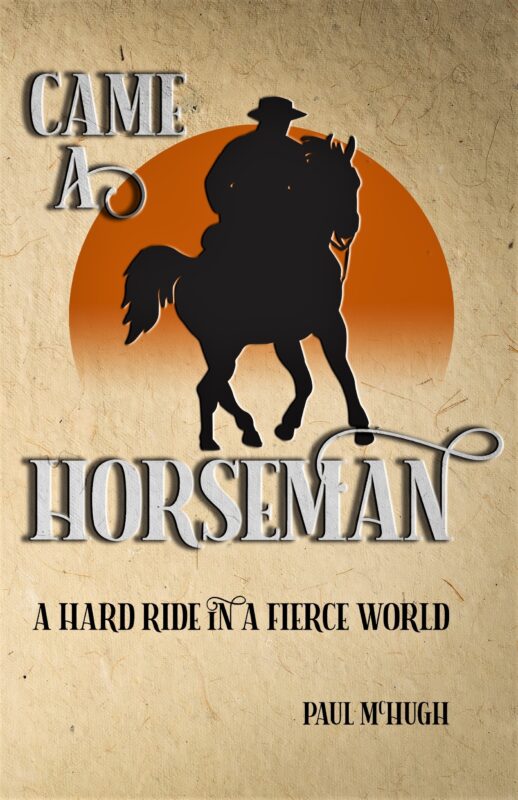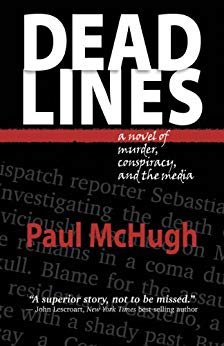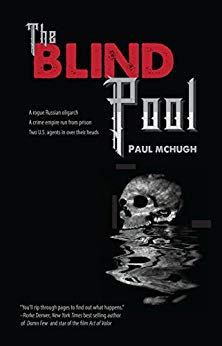
I am a time machine. And, naturally, you are too.
I don’t mean merely that we find ourselves mired in an onrushing tide of tick-tocks from the Big Clock. We’re not solely borne along, willy-nilly, by the whirling cogs that keep a beat of linear time. We’re also constantly born and reborn, via special mental equipment that allows us to project ourselves into a possible future, or retrieve many vivid moments from our pasts.

In fact, we’re almost too good at achieving such feats of visualization. We can proceed to conjure up what never was and what might not ever be. Then sink ourselves into such fantasies so fully, we untether ourselves from current reality. (A case-in-point: Trump rallies.)
Thus, it behooves us to seize full control of this potent process. And by “behoove,” I don’t mean we ought to grow hooves. Unless you buy into reincarnation and transmigration of souls, and folderol such as that. As for me, I find I’ve got just about all I can handle in managing one present incarnation—thank ye gods so much.
That said, I do oft succumb to an allure of visualizing myself within genuine historic eras here on earth. Engagement in this process feels akin to a waking dream, and can nurture any writer’s storytelling. But see, even here, we must draw a line betwixt airy fantasy and realistic visualization. How to divide them? One way: ground your visions with a hefty dose of factuality.
A FLYING LEAP AT A ROLLING DONUT

During the past six years—as regular readers of this newsletter know—I’ve visited many World War II sites in Scandinavia, researching wartime scenarios Across The Pond. That work informs my newest novel, “Splinter,” set in Norway during the Nazi occupation. I do aim to remain engaged with that place and period through a series of sequel novels. The “Splinter” characters have snared my attention and my affection. To keep on writing is the only way I can find out what happens to them.
And for far longer—over the past sixty years—I’ve felt drawn also to a much earlier time in a zone much closer to home: the American frontier. I suspect that a deep dive into the North American frontier ethos can reveal much about the roots of our national character. Perhaps even determine influences that affect current political movement. I DO know that period contains a great heap of harvestable stories!

However, I’m also aware that nostalgia may prove a distorting or disruptive force, particularly when a citizen contemplates his own country’s past. How then might a writer or researcher proceed to stick the rose-tinted glasses of romantic remembrance up on a shelf, instead of out on the end of his nose? I’d say a good way is to become as hands-on as possible amidst any research. Don’t merely fantasize about a past; seek to live a bit of it yourself.
Over decades, I’ve put effort into wilderness exploration, as well as hunting and fishing in relatively pristine settings. I’ve also performed my own butchering of wild game, my own primitive open-fire cooking. Made my own hand-skinned, brain-tanned hides, used them to assemble my own buckskin clothing, and tested these outfits in all sorts of weather. Out in the wild, I’ve enjoyed a number of close-calls and survival adventures. Much more than that may be required to get a good grasp of the lives of the mountain men. Still, I hope I’ve scraped up a sufficient pile of grit to offer me a kind of clue.
ALL OUR PICTURES TELL A HUMAN STORY

The last two deer hides I worked with did not come from deer that I myself had slain or skinned. They came as gifts from a gent named Ed who grew up in Pennsylvania and had a long and storied career in journalism that culminated in Modesto, California. I’ve never physically met Ed. However, years ago he was a good friend and mentor of my wife Dawn. He grew to know about me and my writing and hobbies and fascinations via social media. Subsequently, he felt inspired to offer me some hides that were a heritage from his family’s past.
Dawn birthed her journalism career as an intern whilst yet a student at the University of Oregon. She bolstered it with an apprenticeship at the Oceanside Blade-Tribune, then heard of an opening at the Modesto Bee and went for it with the same verve that (as far as I can tell) she’s used to seize any opportunity in life. She boarded a puddle-jumper from San Diego to LAX, sprinted from Terminal 1 to 2 and made her flight to Modesto just as they were shutting its door. Next, waiting to meet her at the other end on Modesto’s modest airfield was the Bee’s then night city editor, Ed Willhide—a slender, bespectacled, mustachioed chap clad in cowboy hat and boots. (Clothes too, of course.)

Long story short, Dawn won that gig, next hammered keyboards in that Central Valley burg for a stint of three years. Ed credits her with a paltry (joke!) total of 636 byline stories during that period. She credits Ed with the gruff and generous guidance that a capable editor provides, which is a magic spell that can transform a newbie into a tough, capable newsie.
Next, she heard of an opening for reporter at The San Francisco Chronicle and went at it with the same drive. Of course, she took that spot, too. And The Chronicle’s newsroom became the place where she and I met. She arrived a year after I’d been hired as feature writer and assistant editor for the paper’s brand-new, stand-alone Outdoors Section. She happened to be married to someone else at the time. However, eventually that condition proved to be curable.
THE TWO HIDES OF EDWARD WILLHIDE
Chambersburg is the Pennsylvania town where Ed grew up. It lies in the Cumberland Valley midway between Pittsburgh and Philadelphia, not far from the Maryland border. This settlement was pioneered by a Scots immigrant, Benjamin Chambers, who built a grist mill and a saw mill at the confluence of Falling Spring Creek and Conococheague Creek in 1730.
Ed’s ancestors came from Germany to settle in Graceham, Maryland ( about twenty miles southeast of Chambersburg) in 1731. Ed’s grandad then moved his family up to Chambersburg in the early 1900s.
Ed’s dad—Leon Willhide, he went by “Bill”— was born there in 1920; Ed came along in 1949. He has fond memories of being raised in a town of 17,000 people with a rural setting, where his father—a sheet-metal craftsman by trade—could introduce him to local hunting and fishing spots, and initiate him into mysteries of the sporting life.

Those lessons took so well, soon after Ed apprenticed as a cub sports reporter at a local paper, The Public Opinion, he launched into what we outdoors writers dub, “the hook-and-bullet beat.” He wrote a regular column dubbed Squirrel’s Spotlight by Ed “Squirrel” Willhide. This enterprise had its tongue thoroughly in cheek; an art portrait running with his column featured Ed wearing an Australian bush hat with its brim pinned up. He would publish yarns like his conquest of a “Super-Rabbit,” a robust rodent which, due to a photographic trick, was made to appear nearly five feet in length.
Ed’s march to the Modesto Bee subsequently took six major steps up journalism’s ladder over a long career. Yet, no matter what he did or where he did it, he always returned to old stomping grounds to hunt and fish, and he retained vivid memories of those mornings when his dad would bid him to arise in the dark to munch some breakfast and swill black coffee. Then they’d pack sandwiches and drive a rumbling station wagon out into the countryside for a day or so of hunting and fishing.

Neither one of these gents proved to be such a blood-thirsty, gimlet-eyed Nimrod as that notorious “Super-Rabbit” episode may suggest. Over the years, Ed killed two whitetail bucks, and he reports that Bill’s probable whitetail harvest consisted of two as well, one in 1942 and one more in 1972. The tanned hide of Bill’s last buck was the skin that Ed found amongst his belongings, then happily chose to ship off to me.
Another leather item Ed sent me was a deerskin shirt of less certain provenance. He’d stumbled across it in a family closet, lying folded up in a box. A label inside the collar said this item came from The Deerskin Trading Post, of Danvers MA, a city a tad north of Boston lying athwart U.S. Hwy 1. As I looked into it, this Trading Post appeared to have reached a high-water mark in the late 1960s, early ‘70s. That’s when its visibility surged due to sales of natural-looking garments to hippies, rock stars, and back-to-the-land reprobates of various other stripes.
ONE SHEET TO THE WIND
The hide from Bill’s last buck had been smoothly cured as top grain leather and dyed a soft gold color. It had been stored for a long time, so my first job was to get its creases out by draping it in the sunshine and wind, with weights clipped to its lowest edge. It was fun to imagine the hide’s relief at finally being able to go outdoors again. (Such are the visions of animism…)

I then made myself a brown paper vest out of cut-up swaths of shopping bags, taped together, next deployed that pattern to shape three panels and cut them out of the hide. I used thongs sliced from my own brain-tanned hides to then stitch these panels into an actual vest, adding a wild boar’s tusk as its top fastener.

You’ve probably seen someone work a sewing machine, tugging material under a rapidly jabbing needle to achieve a seam of mechanical perfection. Hand-sewing leather isn’t like that. It is s-l-o-w. If the leather seems too tough to shove your glover’s needle through, then a hole must be made in the right spot with an awl, next the needle pushed through from the other side before said hole closes up. Sometimes that needle must be grasped with pliers to yank the thong or sinew through. Patience, not speed, is the theme. Precision derives only from steady mental focus—letting your mind wander can mean a crooked stitch that then must be undone, or giving yourself a needle stick that puts a bright bead of blood on the ball of your thumb, a dye that you don’t then wish to smear on the leather.
Still, as one labors on in this manner, realization begins to dawn about the true value of handmade leather garments, and the great amount of care and devotion actually required to produce them. And thus you gain insight into the technical practices of a far different age. You realize how grateful a recipient might be, when handed a durable and useful garment worked up by a pair of loving hands. You understand how and why members of the Lewis & Clark expedition spent much of the winter at their Clatsop camp on the Columbia River stitching together moccasins so that they could be well-shod for the long trip home.
THROWING SOME GEAR INTO REVERSE
That Trading Post shirt Ed gave me was a greater challenge. It was made of suede— the inner corium layer of leather, with top and bottom grains removed. This rendered it soft and flexible, yet also somewhat flimsy. I rather suspected this garment of being processed doe hides, not buckskin. Most of its seams had been glued, either before or after getting machine-sewn. In addition, it was around size medium, whereas my torso inhabits a zone between X and XL. Translation: I could manage to stretch the thing enough to tug it on, yet it fit me tight as a straitjacket.

Crisis can equal opportunity, it’s said. Obviously, I needed to open it up and add material. I had some suede cowhide on hand that I’d planned to use for leggings. In color and texture, it was a nice match, so I put panels of that out front. Then, to add accent pieces, a pocket, fringe, and to lengthen the sleeves with cuffs, I used my own brain-tanned buckskin. For a new closure, I sliced an antler into buttons and sewed them on with sinew. A strong thong could be looped around these buttons on a figure-eight pattern to tighten or loosen the closure, depending on what I wore underneath.

Now I’d not only begun to voyage back in time myself, but I was toting that jacket right along with me.
When I watch many Western films or TV shows made amid the 20th Century, I grow amazed over and over at how clean and tidy most characters look. Gingham dresses are starched, pants and boots are spotless, and the hairdos of men and women only sometimes become artfully mussed—all the rest of the time, not a strand is out of place. That overall gloss of “niceness” runs more than skin deep. Whitewashing all the grime, dust and mud is a policy that stands in utter solidarity with painting over all the corruption, racism, violence, exploitation, treaty violation and Native American genocide that cropped up as part and parcel of our conquest of the West.
Of course, buckskin jackets received pretty much the same type of Hollywood make-over. Most often in these films, the fringed jackets are obviously built of cowhide, all fringe is precisely die-cut, the collars, cuffs, pockets and closures are modeled on blazers and frockcoats, and so the high neolithic art of creating a hide garment gets forcibly stuffed, with nary a footnote nor apology, straight into the industrial age. But don’t we all feel far more snug and comfy here? Well, perhaps not.
To see what buckskin garments can truly be, study the tribal wares worn in the dawn of black-and-white photography.

I’m proud and pleased to say, by modifying the jacket Ed gave me, I was able to reverse a long trend that tried to tame and domesticate buckskin. At least, somewhat.
TO STEP BACK DOWN A STAIRCASE
We tend to think of our frontier history as ancient and remote. It’s not. I can bring us back there in a few forty-year steps, simply by deploying five of them.
Forty years ago, my wife Dawn got off the plane in Modesto to meet Ed Willhide.
Forty years before that, our whole planet flailed in the throes of World War Two.
Forty years before that, the first silent movie came out, Wilbur and Orville Wright flew the first heavier-than-air craft, and Panama declared itself independent of Columbia so the U.S. could proceed to build the great canal.
Forty years before that, the Sand Creek Massacre occurred in southeast Colorado, as white militias slew Cheyenne and Arapahoe tribes that had come to peaceably settle on a reservation; a tragedy leading ineluctably to the Battle of the Little Bighorn 12 years later and the Massacre at Wounded Knee 14 years after that.

And forty years before Sand Creek, planning began for the first Rocky Mountain Rendezvous in Wyoming, wherein fur traders, trappers and mountain men would meet to trade goods, acquire supplies, swap tall tales and engage in bouts of inebriated merriment as well as tests of strength and skill.
As I said earlier, I can’t claim to know everything about what life was like on the frontier. Right now, I comprehend just about enough to know that Zane Grey and James Fenimore Cooper were full of crap. (But not Thoreau, though.)
I still avidly pursue learning. When the day comes that I start to visualize and begin to write, I hope I’ll know a bunch more. However, I already do grasp what it’s like to shove an awl through leather and chase it with a needle tugging sinew. I can see the big difference between using steel and bone or stone tools, and perceive how it was possible to make a stir in a native camp by arriving with a small package of metal thimbles, scissors and knives. I know the cozy feel of dry buckskin against my own hide, and what sort of weather that outfit can handle, and what it can’t.
Hey. It’s a start…









